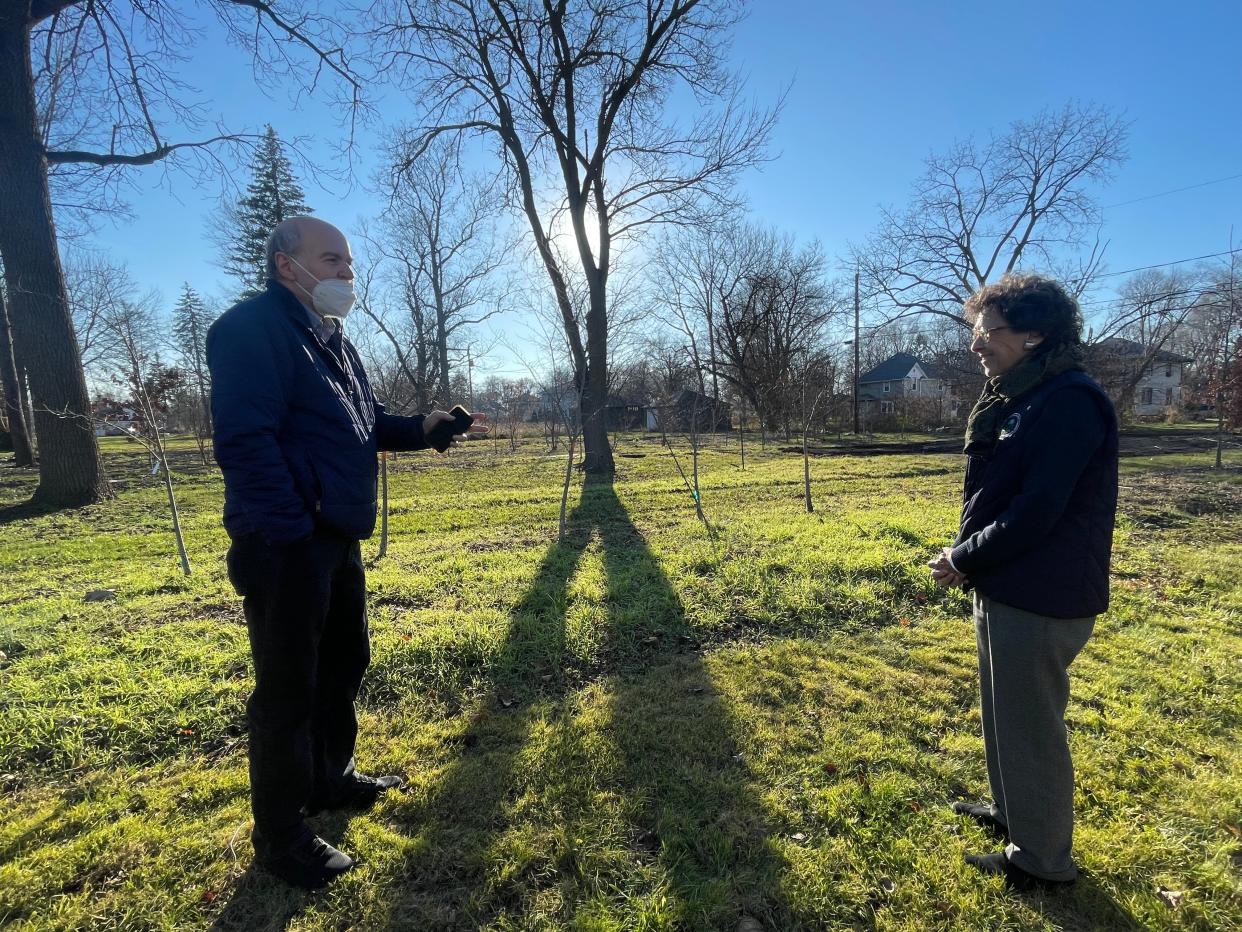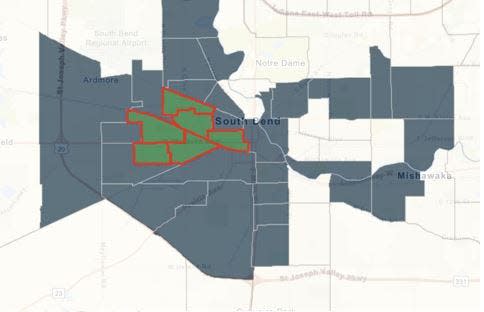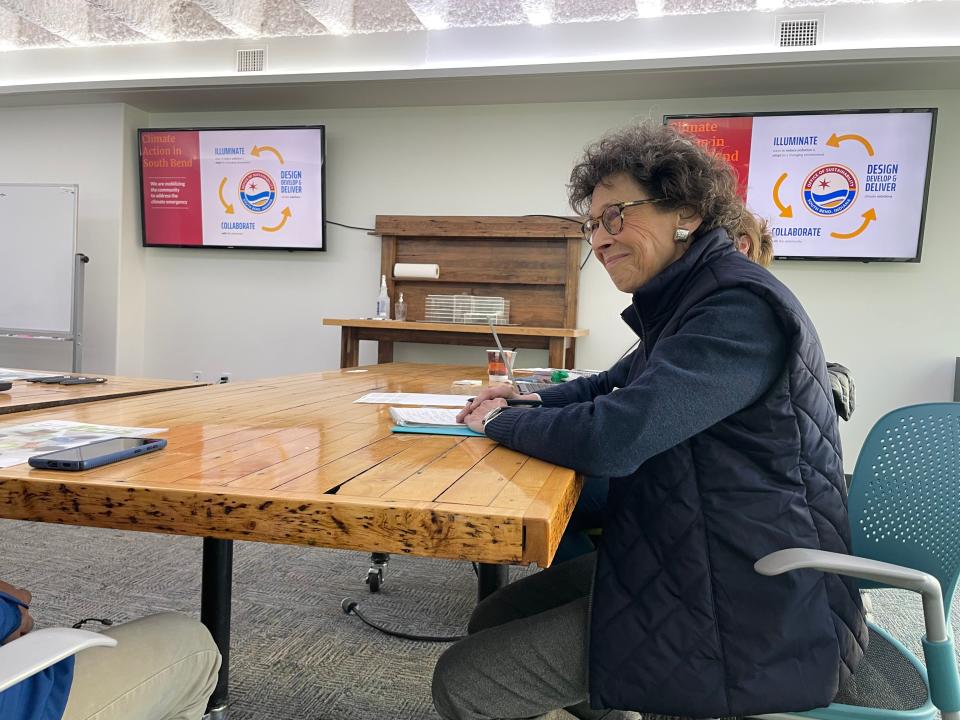Nonprofit enFocus granted $500,000 to plant trees, work toward environmental justice

SOUTH BEND — A local nonprofit has won a federal grant to plant more trees in historically disadvantaged South Bend neighborhoods and to pursue other goals in keeping with the city's climate action plan.
The Environmental Protection Agency is granting $500,000 to enFocus, which hires young professionals to work alongside governments and businesses to address local issues. Over three years, the grant will pay for efforts in several low-income west side neighborhoods to increase the urban tree canopy, to cater a city job-training program to environmental work and to help residents make their homes more energy-efficient.
The targeted census tracts cover multiple west side neighborhoods including Kennedy Park, LaSalle Park and the Near West Side. The tracts are about 80% Black or Hispanic, according to data shared by enFocus.

The grant is part of a $128 million federal effort to fund 186 projects that advance environmental justice by supporting areas that suffered most acutely from pollution and disinvestment. It will also bolster South Bend's efforts to plant nearly 100,000 new trees across the city by 2050 and to achieve 40% tree canopy coverage.
Debra Shore, the regional administrator for the EPA's Region 5 office in Chicago, visited enFocus on Thursday to commend the group for its effort and to visit a west side tree nursery managed by the city.
More: How waste was dumped in a South Bend neighborhood for decades, tainting the soil with lead
The unemployment rate in these five South Bend tracts is in the top 5% compared with other U.S. census tracts, according to enFocus. And the discriminatory lending practice of redlining has contributed to a gradual decline in home values in the neighborhoods, ranging from losses of $35,000 to $70,000.
They rank in the top 10% on a respiratory hazard index because of decades of air pollution. The average tree canopy covering the area is 11%, compared with a 26% citywide rate.
"Those (disadvantaged) communities often haven't had a seat at the table when decisions are being made about granting permits to expand plants or to locate new facilities," Shore said. "Environmental justice is about making sure that the people who live and work in neighborhoods have a voice in their country, and in their quality of life.”

Gillian Shaw, the vice president of projects at enFocus, said the organization's first step is to combat the mistrust among affected residents. She said enFocus will hire advisers who live in the relevant neighborhoods to work alongside the group's professionals.
An early challenge is that many residents are reluctant to plant new trees on their property, enFocus learned during conversations with more than 800 homeowners conducted over the summer.
Brent Thompson, South Bend's city forester for 31 years, runs into the same issue when he advocates for more planting. He said residents in low-income neighborhoods, who are often renters and who tend to be less educated on the benefits of street trees, can view trees as just another burden.
"They look at it as a bill," he said, standing near a tree nursery on Allen Street in northwest South Bend where the city has planted rows of saplings.
"Because look at this tree right here,” Thompson says, pointing to a big sycamore that's won a subterranean battle against the adjacent sidewalk. “It's knocked up the sidewalk. It's big.
He added: "There’s a big dead limb right up top there that's going to fall down on one of the cars. And all that responsibility is on the homeowner. And these residents, I mean, they can't afford a $1,000-2,000 tree bill.”
He also cited research showing that residents who feel negatively about their neighborhoods are less likely to plant trees. This sets up a dilemma in which the proven benefits of urban trees — how they cool down neighborhoods, de-stress residents, boost property values and reduce flooding — are harder to realize in the neighborhoods where they're most needed.
Starting in the spring and spanning three years, enFocus hopes to target this paradox and find solutions to other climate issues, Shaw said.
The organization aims to contribute to South Bend's goal, outlined in a 2019 climate action plan, to reduce greenhouse gas emissions by 26% by the year 2025 and 100% by 2050.
Alex Bazan, the director of South Bend's office of sustainability, said the city is on track to surpass the 2025 goal with a 32% reduction in emissions since 2019.
“If we can address that with building a tree canopy, empowering these residents to participate in the workforce, and to mitigate the emissions of their household," Shaw said, "we think that we can have a dramatic effect on South Bend’s carbon-neutral goals.”
Email South Bend Tribune city reporter Jordan Smith at JTsmith@gannett.com. Follow him on X: @jordantsmith09
This article originally appeared on South Bend Tribune: South Bend nonprofit works to plant trees in disadvantaged areas

